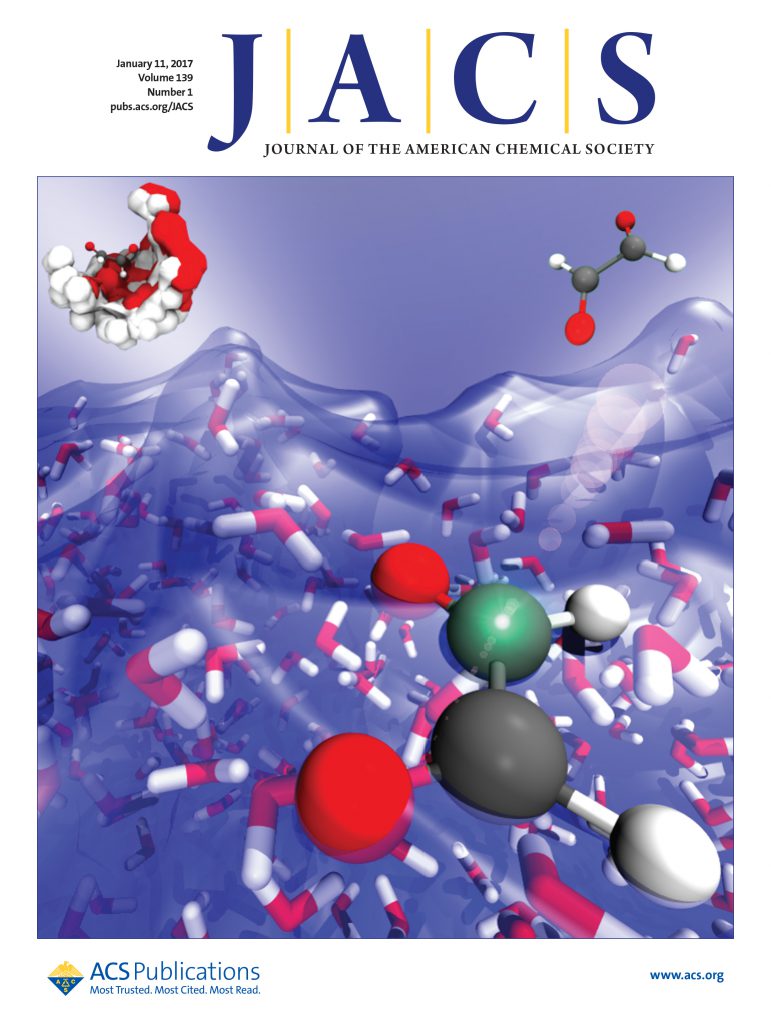Rational Control of Ionic Conduction of Encapsulated Ionic Liquid by Fluorination of Isoreticular Metal–Organic Frameworks
IF 14.4
1区 化学
Q1 CHEMISTRY, MULTIDISCIPLINARY
引用次数: 0
Abstract
Hybrid materials have attracted much attention in solid-state conductors because of their great advantage in various combinations of components. In this study, the control of ionic conductivity of ionic liquid (IL), which is encapsulated in micropores of metal–organic frameworks (MOFs), has been realized by the chemical modification of the ligands of MOFs for the first time. When IL, 1-ethyl-3-methylimidazolium bis(trifluoromethanesulfonyl)amide ((EMI)(TFSA)), is encapsulated into the pores with a 50% volumetric filling level, it shows the highest ionic conductivity when encapsulated in the fluorous MOF among the three isoreticular zinc-based microporous MOFs; the ionic diffusivity is 1 order of magnitude higher than that of (EMI)(TFSA)-encapsulated non-fluorous MOF. Computational simulations indicate that the mobility of (EMI)(TFSA) in a non-fluorous framework is significantly restricted due to abundant C–H···F interactions, whereas the introduction of fluorine atoms on the ligands suppresses the C–H···F interactions, thereby showing the highest ionic conductivity. On the other hand, the ion migration of encapsulated (EMI)(TFSA) is not greatly affected by the fluorination of the ligands at a 100% filling level, because the possible different IL distributions with a 50% filling level are largely eliminated for the fully occupied (EMI)(TFSA).

求助全文
约1分钟内获得全文
求助全文
来源期刊
CiteScore
24.40
自引率
6.00%
发文量
2398
审稿时长
1.6 months
期刊介绍:
The flagship journal of the American Chemical Society, known as the Journal of the American Chemical Society (JACS), has been a prestigious publication since its establishment in 1879. It holds a preeminent position in the field of chemistry and related interdisciplinary sciences. JACS is committed to disseminating cutting-edge research papers, covering a wide range of topics, and encompasses approximately 19,000 pages of Articles, Communications, and Perspectives annually. With a weekly publication frequency, JACS plays a vital role in advancing the field of chemistry by providing essential research.

 求助内容:
求助内容: 应助结果提醒方式:
应助结果提醒方式:


